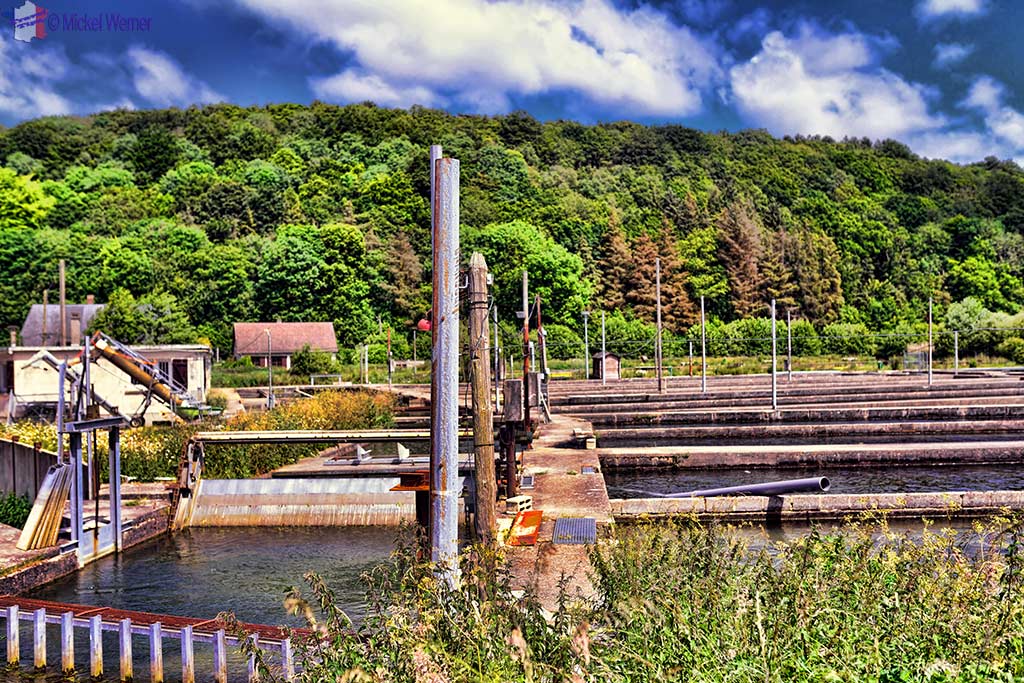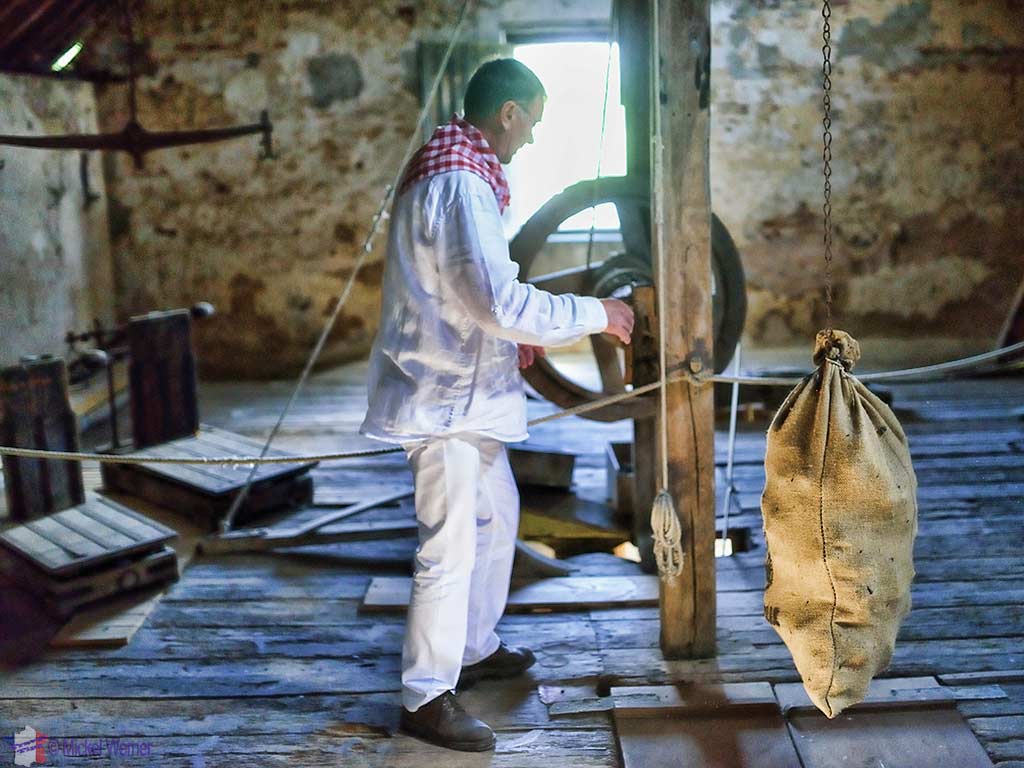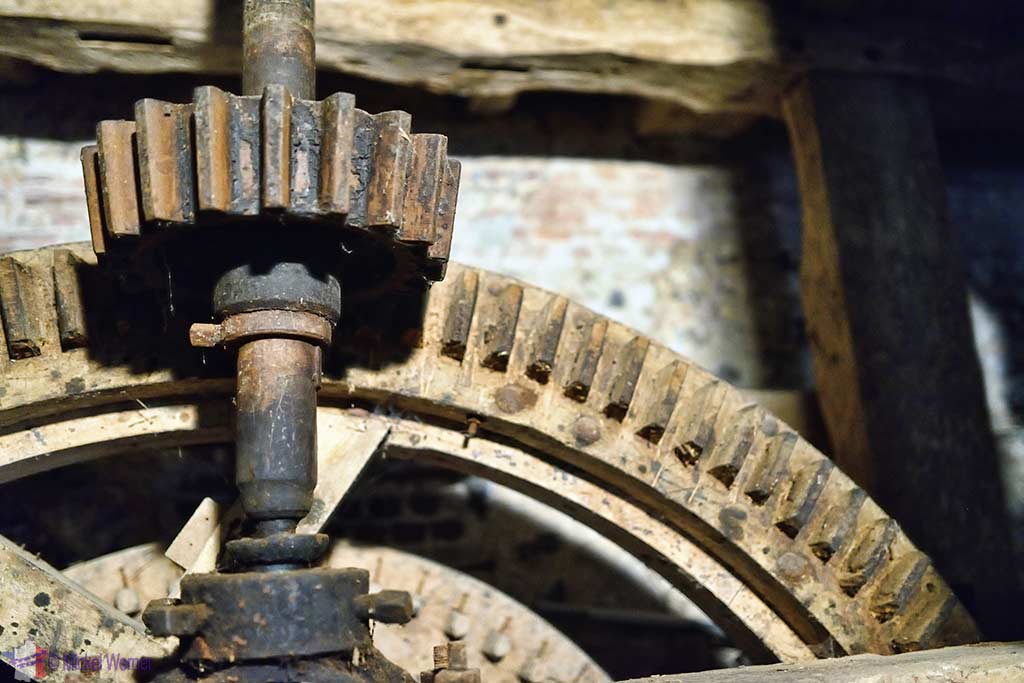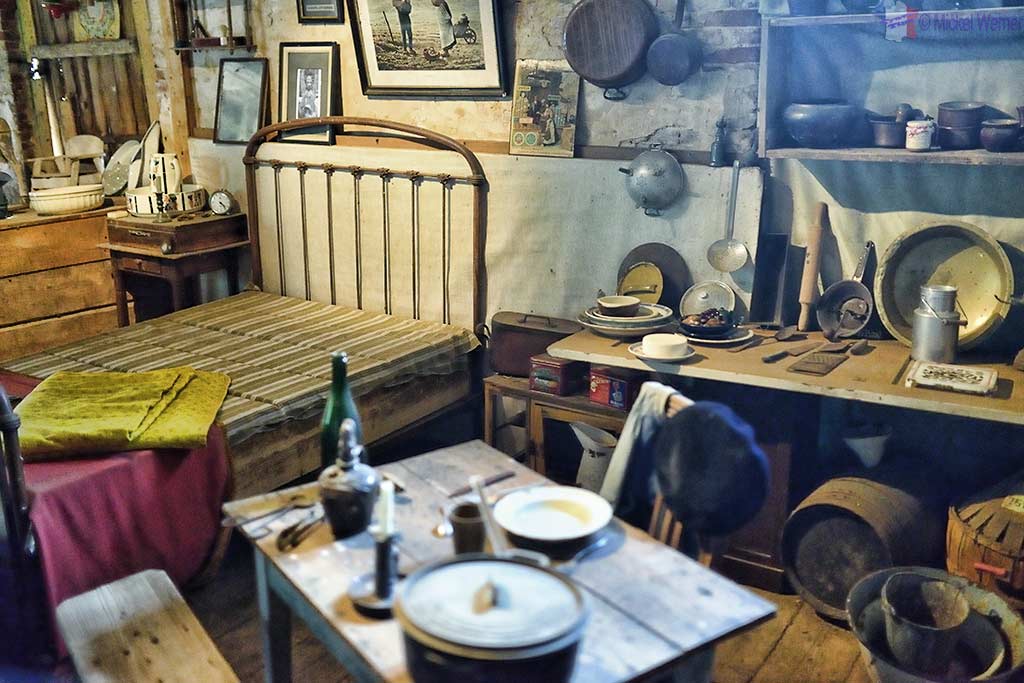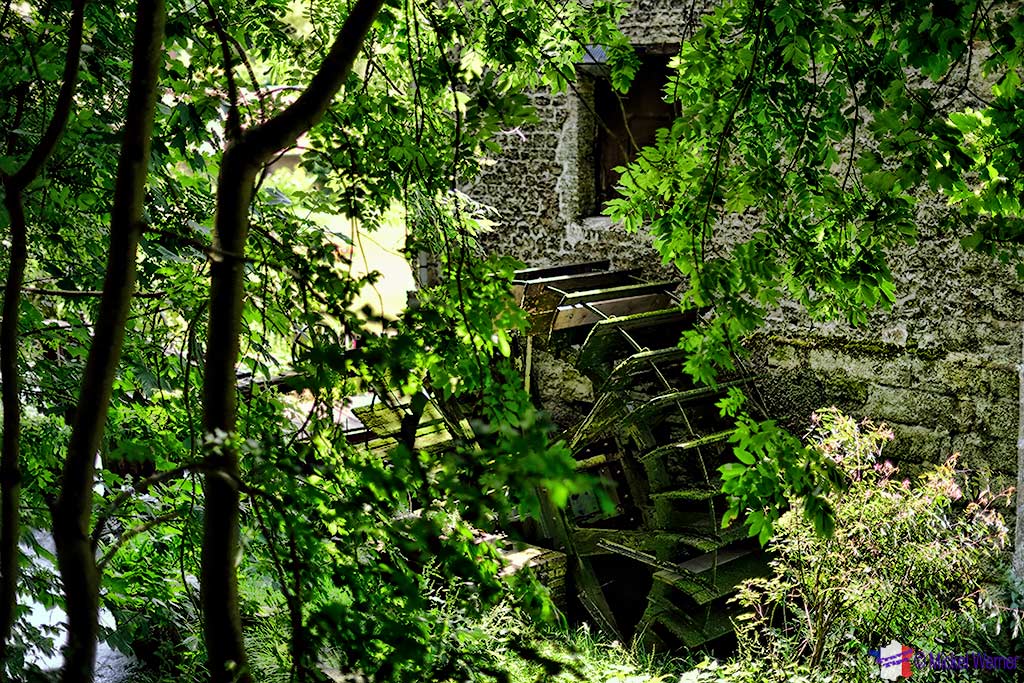Watermills have been used over the centuries around the world to regulate water levels (notably in The Netherlands) or to grind wheat, corn and other products. For a watermill to exist you not only need a river, but you need especially a fast flowing river. Normandy, particularly Upper Normandy, has several fast flowing rivers, and you can see that by the number of watermills.
One river, the Durdent, is particularly known for its many watermills; the Durdent valley is appropriately known as the “Valley of the Watermills“. The Durdent river is not wide or deep, but it flows fast (average of 3.8m3/sec). So even today you will find 18 watermills alongside the short river. Back in the 19th century, there were 60 watermills operating on the 24 kilometre stretch of river, grinding things like wheat, mustard or even generating electricity.
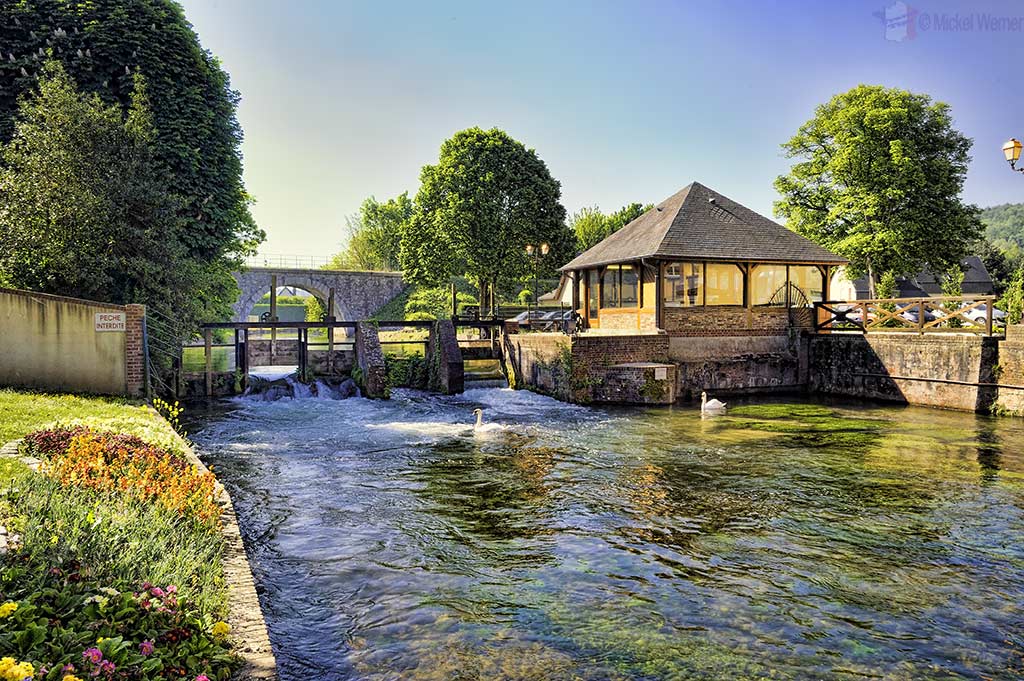 Electricity generating watermill at Cany-Barville, Normandy
Electricity generating watermill at Cany-Barville, NormandyOne such electricity generating watermill is still in operation. It is to be found on the small but very active town of Cany-Barville (where you will also find a beautiful castle – click here). You can see the mill operating, including the periodic automatic cleaning of the water-based rakes.
Often you can not see the watermills from the main road since the river snakes around the luscious valley.
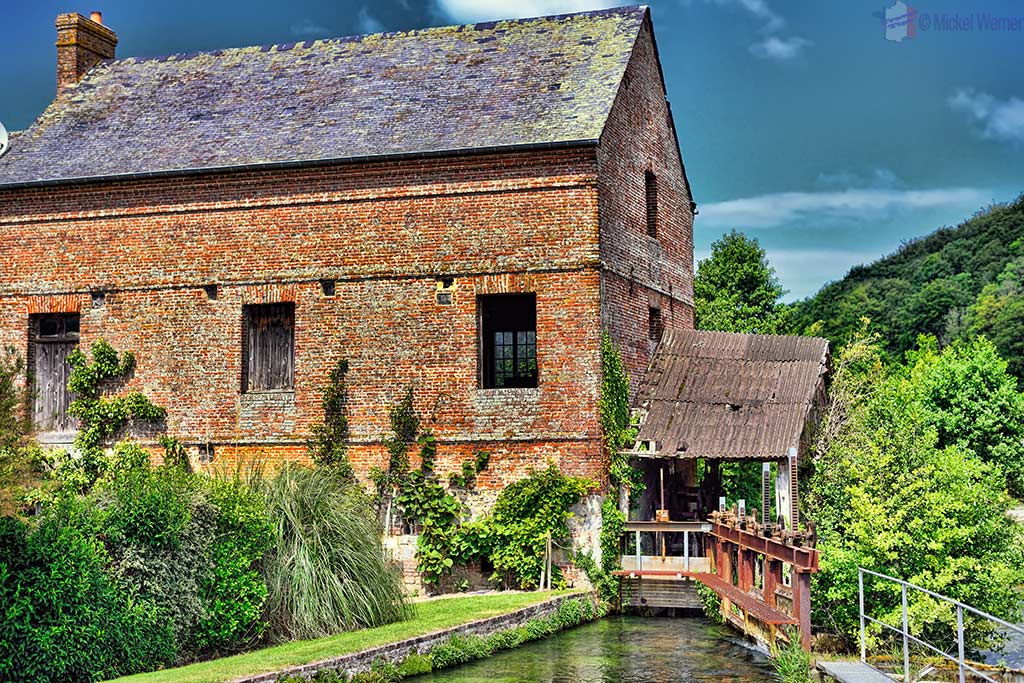 Watermill alongside the Durdent Valley in Normandy
Watermill alongside the Durdent Valley in NormandyYou will need to take small roads, off the beaten track, in order to see these treasures. Alongside the Durdent river you will also find several “special” farms:
These special farms are fish farms where fish are raised. They raise mostly trout, and many of them are open to visitors who want to fish with an almost guaranteed success of catching fish. Some farms will even prepare and cook your caught fish. The fish farm in the photo above is associated with the watermill in the photo above it.
 Watermill in the Durdent valley
Watermill in the Durdent valley Watermill alongside the Durdent Valley in Normandy
Watermill alongside the Durdent Valley in NormandyMost of the watermills are still in operation but are no longer commercial businesses.
Anyone can buy a watermill, however you require a license to operate one. To get a license you must learn things about water flows, water management, fish, and you are required to help in the management of the water flow particularly when there is too much of it flowing.
All alongside the Durdent valley, even if you stick only to the main road until the sea, you will see plenty of watermills:
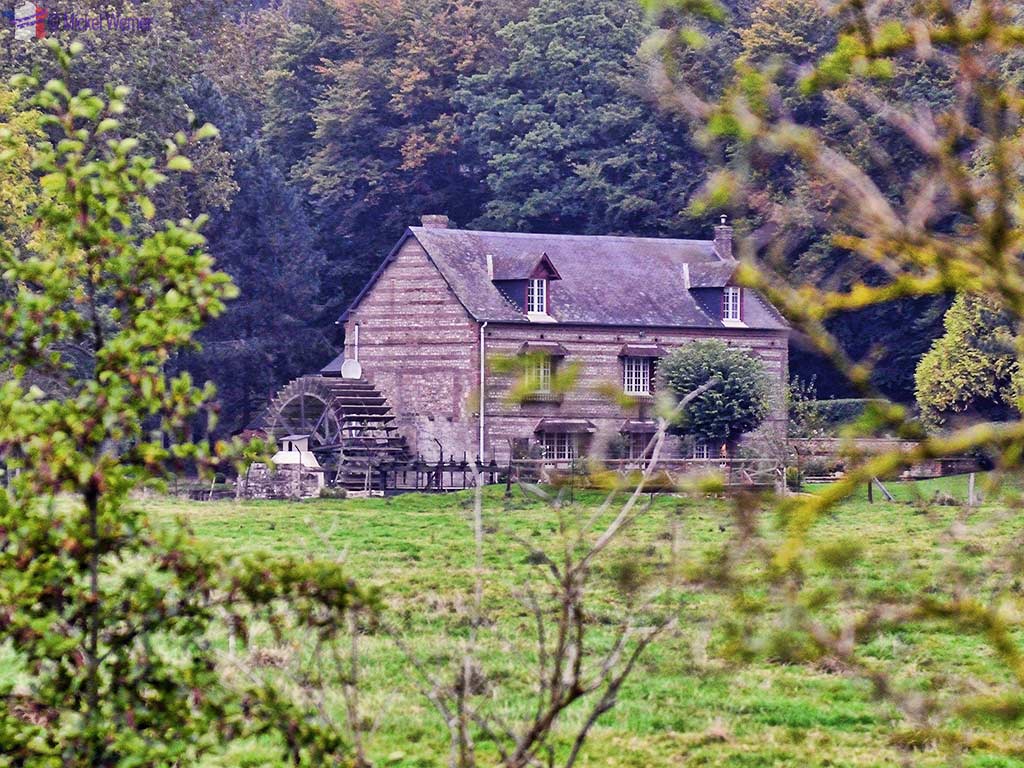 Watermill alongside the Durdent Valley in Normandy
Watermill alongside the Durdent Valley in NormandyMany of the watermills can be visited, but not all the time. During the National Heritage Days (Journee du Patrimoine), the National Watermill Days (Journees du Patrimoine des Moulins – every 3rd weekend in June) and on special occasions (always clearly marked alongside the roads) will many of the watermills open their doors to the general public, often for free.
Many of these “open days” will have the inhabitants showing the workings of the mill, some even dressed up for the occasion.
You can see up close the often complex machinery inside the mills.
Some watermills will even have exhibited areas in the mill with living quarters and conditions the way the people lived in the days that the watermill played an important role in the local economy.
But the Durdent valley is not the only place where you will find many watermills, although it has the highest concentration.There are many small rivers in Normandy that see several of them, and one, the smallest river (1100 meters) in France, has 3 working watermills (and several no-longer-working ones). The village that hosts the river and watermills is Veules-les-Roses.
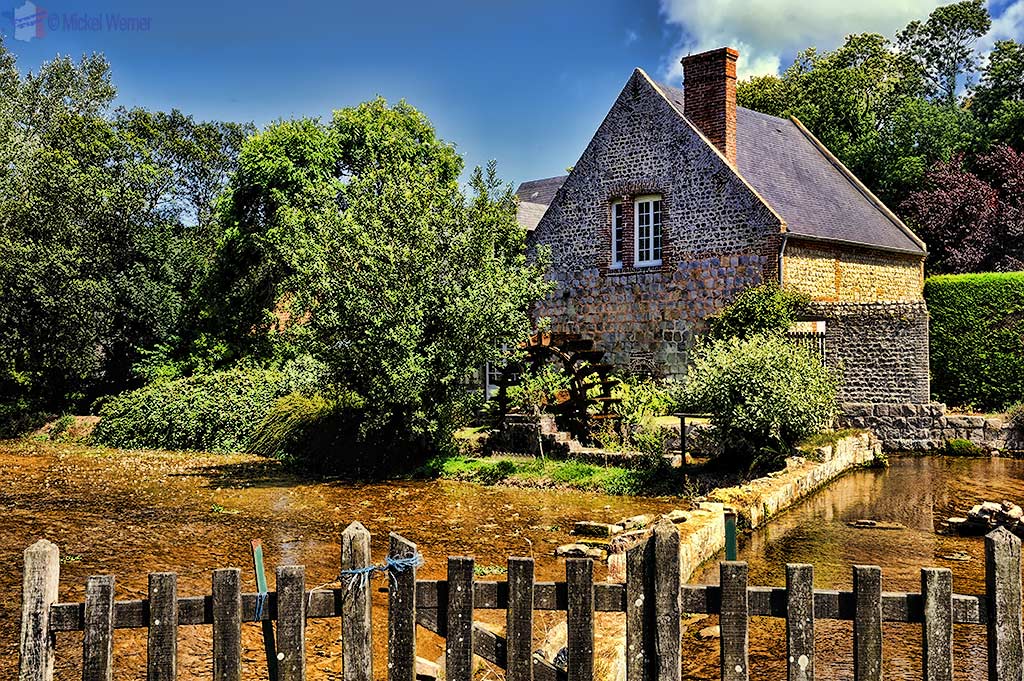 Watermill in Veules-les-Roses, Normandy
Watermill in Veules-les-Roses, NormandyWith the Veules river flowing through the village, and the watercress industry,it makes for some beautiful sceneries.
All along the Veule river you can see several watermills, some of them working, some not. Even the old hotel/restaurant in the centre of the village has one (but not operating).
So when traveling through Normandy, head for the small rivers and streams. You’ll notice watermills hidden away. Or look for tourist signs saying “Moulin”.

